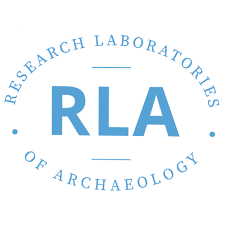2021-2022 UNC World View Fellows Resources
The UNC World View Global Fellows Program: Exploring Indigenous Cultures: Ancient North Carolinians, Past and Present
About the Project: American Indians lived in the area we now call North Carolina for at least 15,000 years. Archaeologists study the remnants of their communities to learn who these people were and how they lived and prospered for thousands of years. By collecting pieces of the archaeological puzzle, we know more about past indigenous lifeways and how people and cultures changed over time. Today, North Carolina is home to the largest population of American Indians east of the Mississippi River, totaling as of 2021 more than 184,000 people with eight state-recognized tribes and four urban Indian organizations.
The lessons presented on this website were developed as part of the 2021-2022 UNC World View Fellows Program, Exploring Indigenous Cultures: Ancient North Carolinians, Past and Present. North Carolina educators were selected as Fellows and they created lessons for a variety of disciplines in K-12 schools and community colleges so students can learn about the ancient peoples that lived here and those who represent today’s vibrant American Indian populations. Lessons also make connections from the past to the present day by exploring multiple resources within the Ancient North Carolinians: A Virtual Museum of North Carolina Archaeology website to examine how communities changed over time and what influenced these changes. Understanding past indigenous lifeways—their complexity, resiliency, and vitality—allows for a greater appreciation of the contributions American Indians made to the past and continue to make to the present and future of North Carolina.
The 2021-2022 UNC World View Fellows Program is a partnership with the Research Laboratories of Archaeology (RLA) and the American Indian Center. Students will learn about North Carolina’s indigenous cultures by using the Ancient North Carolinians: A Virtual Museum of North Carolina Archaeology website. This website, developed by the RLA, tells the story of the people who lived in North Carolina from 15,000 years ago to the early eighteenth century—the ancestors of today’s American Indians. Educators and students can discover archaeology in their part of the state, learn about American Indian and Colonial heritage, explore driving trails of archaeological and historical sites, and much more. Galleries feature videos on a variety of topics and 3D models of ancient objects, from stone spearheads and knives, to ceramic pots, to animal bone tools and ornaments. This virtual museum is a valuable resource for educators.
The eight state-recognized tribes are the Coharie Tribe, Eastern Band of Cherokee Indians, Haliwa-Saponi Tribe, Lumbee Tribe of North Carolina, Meherrin Nation, Occaneechi Band of the Saponi Nation, Sappony, and Waccamaw Siouan. For a map and more information, visit Ancient North Carolinians / Indian Heritage / By Modern Tribe (https://ancientnc.web.unc.edu/indian-heritage/by-modern-tribe/).
UNC World View is most appreciative for the expertise and support given by Dr. Heather Lapham, an archaeologist with the UNC Research Laboratories of Archaeology and Dr. Priscilla Maynor, education strategist and member of UNC American Indian Center’s Advisory Council.

| Explore Curriculum Created by the 2021-22 Fellows | ||||
All Grades |
K-5 |
6-8 |
9-12 |
Community
|


